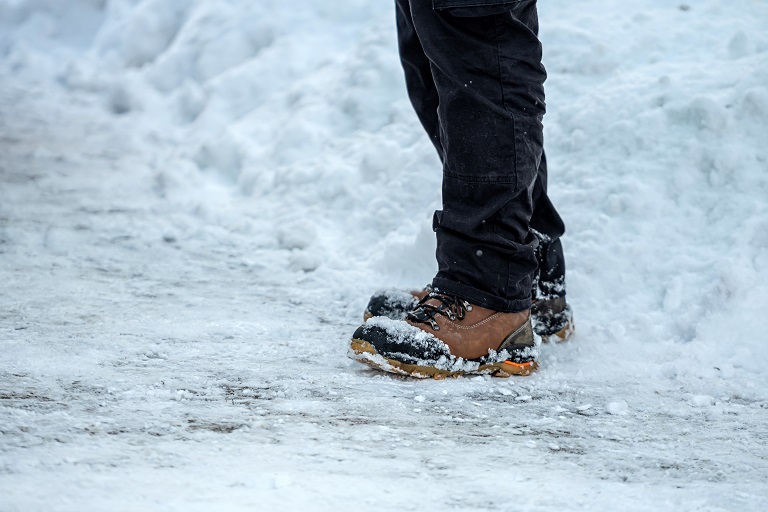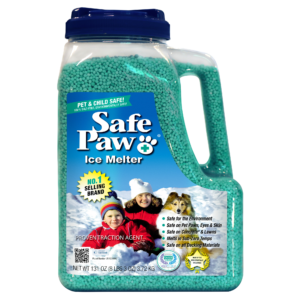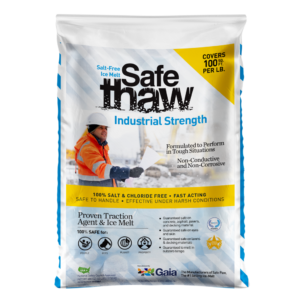Walking On Ice Safety Tips

Winters are exciting, but they also bring with them the challenge of clearing the snow. Walking on ice leads to slip and fall accidents, and a majority of them happen around residential areas. As responsible citizens, it becomes our duty to ensure there is no slick terrain near our houses.
Hence, here are a few walking on ice safety tips, including snow removal solutions to fight the winter woes. If you’re thinking that using an ice melt is all it takes, you’re wrong.
Rock salt and ice melt are common ways of clearing ice. But, they’re not the best solution. Let’s understand why.
Walking on Ice Safety Tips
1- Check If It Is Safe
While discussing the walking on ice safety tips, the first and foremost thing is how to know whether it’s safe to walk on the ice or not.
Ice strength is determined by many factors, such as age, distance to shore, river outlets and inlets, obstructions like rocks, trees, and plants, and water currents.
The clear blue ice is the most stable. Blue ice is twice as strong as white opaque or snow ice. Wet snow freezes on the ice, forming an opaque colored surface.
Grey ice is dangerous. For walking or skating alone, the minimum ice thickness should be 15 cm. Snowmobiles require a depth of 25 cm.
2- Use The Right Product
Ice melts are effective when you need your driveway to be safely accessed. But, ice melts take time to melt ice and cannot be used on new driveways.
Traction Agents are the best solution when you need immediate traction on the surface so that you can safely walk on ice anywhere. Adding traction for walking on ice also helps in keeping the concrete driveways and the environment safe.
There are various options available in the market.
Organic Traction Agents
You can choose organic traction items like sand, wood shavings, sawdust, and kitty litter. Organic tractions agents make walking on ice easier and are also less harmful and cost-efficient as compared to salts.
But on the downside, these organic traction agents provide marginal friction on the icy surface and create a lot of mess. They tend to clog your side drains, stick to your shoes. Wood shavings and sawdust can also hurt your pet’s paws.
Walk On Ice
The ‘absorbers’ drain the water, making the ice less slippery and creating a non-slip surface. While the ‘grippers’ grip the ice, providing traction for you and your family. You can use it on any surface surrounding your house, including your driveway, sidewalk, and patio.
It comes in convenient disposable canisters that can be taken with you wherever you go. It may be used on tires or sidewalks and steps as an instant traction agent.
3- Appropriate Footwear For Walking On Ice
You can use a shoe with large treads or raised patterns when walking on ice to help your feet maintain their grip on the ground. Rubber soles also assist you to keep your balance.
The best snow and ice walking shoes have waterproof soles. Look for good insulation within the shoe. The best footwear for walking on ice will feature water-resistant insulation linings to keep warmth locked in.
Get ready for winter with Walk On Ice instant traction on snow and ice
Other Ice Melt Products
Safe Paw
The Original and the #1 Pet and Child Safe Ice Melt for over 20 years. Guaranteed environmentally safe – will not harm waterways and sensitive wetlands. Safe Paw can change how winter affects our planet.

Safe Thaw
Imagine an ice melt you can put down and never worry about. It won’t harm pets, kids and your property. That’s Safe Thaw. Unlike anything else on the market, Safe Thaw can change how winter affects our planet.



